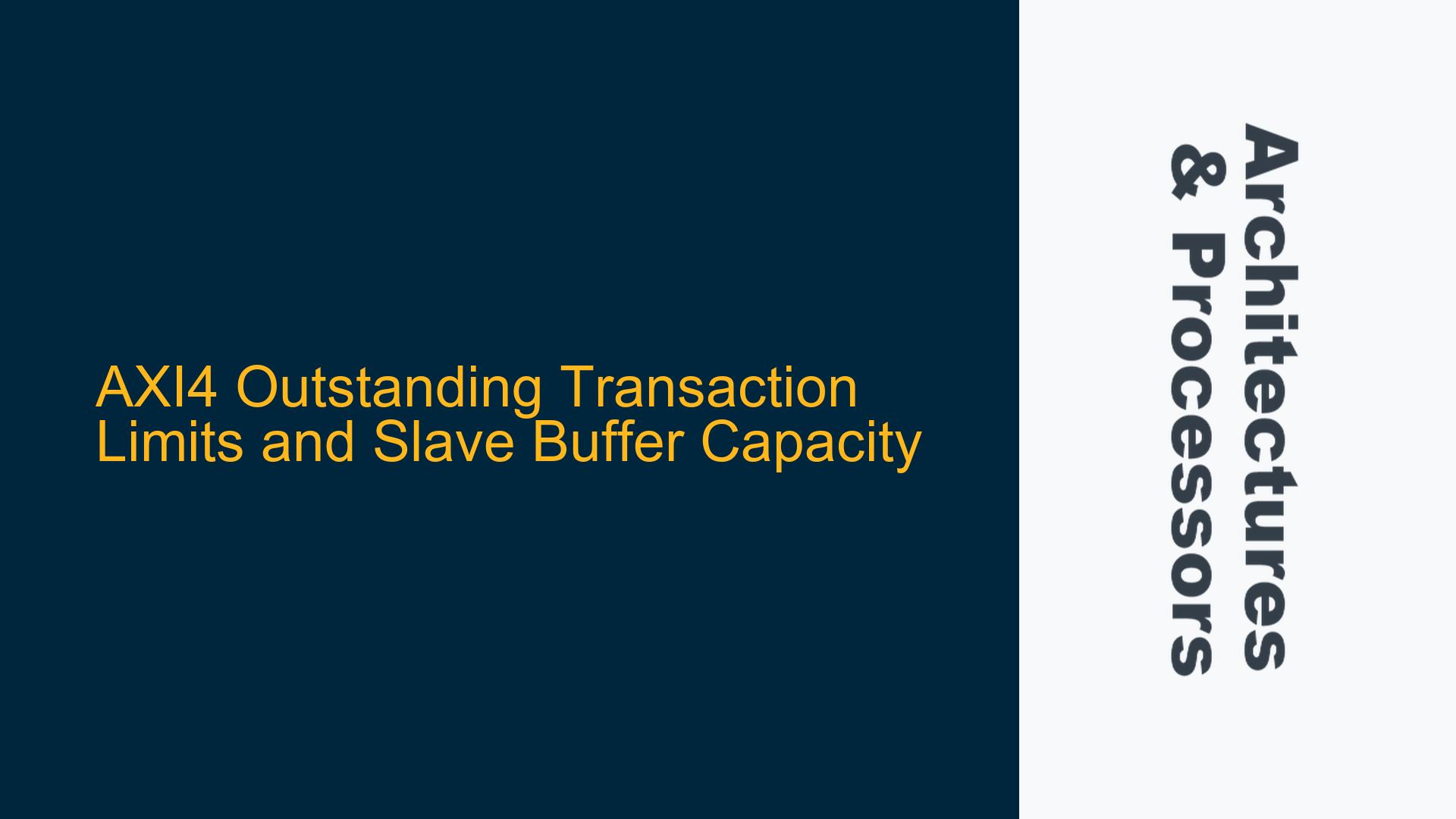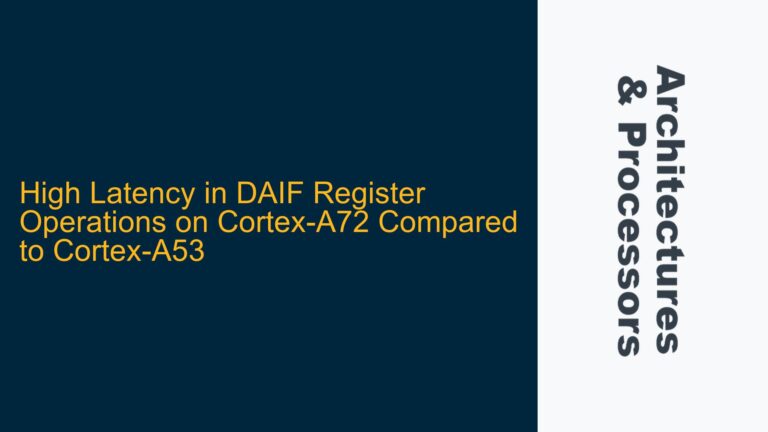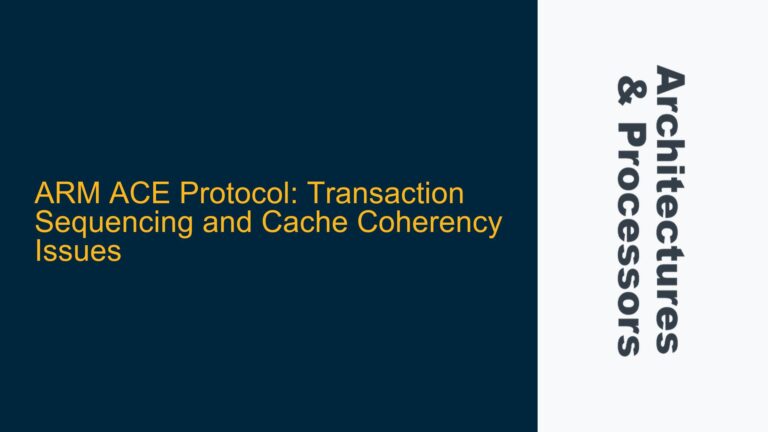AXI4 Protocol Specification and Outstanding Transaction Handling
The AXI4 protocol, as defined by ARM, is designed to support high-performance data transfers between masters and slaves in a system-on-chip (SoC) environment. One of the key features of AXI4 is its ability to handle multiple outstanding transactions, which significantly improves data throughput and system efficiency. Outstanding transactions refer to the number of transactions that a master can issue without waiting for a response from the slave. This capability is particularly useful in scenarios where large amounts of data need to be transferred, such as in video processing or high-speed networking applications.
In the AXI4 protocol, the master initiates a transaction by asserting the appropriate valid signal (e.g., AWVALID for write address channels) and providing the necessary control and address information. The slave, upon receiving the transaction, responds with a ready signal (e.g., AWREADY) to acknowledge the transaction. The master can continue to issue new transactions as long as the slave is ready to accept them. However, the protocol does not impose a specific limit on the number of outstanding transactions that a master can issue. This flexibility allows designers to optimize their systems for performance based on the specific requirements of their applications.
Despite the lack of a protocol-imposed limit, the practical number of outstanding transactions is constrained by the capabilities of the slave device. Each slave has a finite amount of buffer space to store incoming transactions before they are processed. If the master issues more transactions than the slave can buffer, the slave will deassert the ready signal, effectively pausing further transactions until it has processed some of the pending ones. This backpressure mechanism ensures that the slave does not become overwhelmed and that data integrity is maintained.
Slave Buffer Capacity and Transaction Backpressure
The capacity of a slave to handle outstanding transactions is determined by its internal buffer size. This buffer is used to store the address, control, and data information associated with each transaction until the slave can process it. The size of this buffer varies depending on the design of the slave and the specific requirements of the application. For example, a high-performance memory controller may have a large buffer to accommodate a high number of outstanding transactions, while a simple peripheral device may have a much smaller buffer.
When the master issues a transaction, it checks the state of the ready signal from the slave. If the ready signal is asserted, the master can proceed with the transaction. If the ready signal is deasserted, the master must wait until the slave is ready to accept new transactions. This handshake mechanism ensures that the master does not overwhelm the slave with more transactions than it can handle.
In the context of the original question, where a large number of AWVALID signals are asserted for writing a frame of 4K video data, the master must be aware of the slave’s buffer capacity. If the master attempts to issue more transactions than the slave can buffer, the slave will deassert AWREADY, causing the master to pause. This pause can lead to inefficiencies in the data transfer process, as the master must wait for the slave to catch up before it can continue issuing new transactions.
To mitigate this issue, designers can implement several strategies. One approach is to increase the buffer size in the slave to accommodate a larger number of outstanding transactions. This solution, however, may not always be feasible due to area and power constraints. Another approach is to optimize the master’s transaction issuance rate to match the slave’s processing capacity. This can be achieved by implementing flow control mechanisms that monitor the slave’s ready signal and adjust the transaction rate accordingly.
Implementing Flow Control and Optimizing Transaction Issuance
Flow control is a critical aspect of managing outstanding transactions in an AXI4-based system. By implementing flow control mechanisms, designers can ensure that the master does not overwhelm the slave with too many transactions, while still maintaining high data throughput. One common flow control technique is to use a credit-based system, where the master is granted a certain number of credits that represent the number of outstanding transactions it can issue. Each time the master issues a transaction, it consumes a credit. When the slave processes a transaction and frees up buffer space, it returns a credit to the master. This credit-based approach allows the master to dynamically adjust its transaction rate based on the slave’s capacity.
Another flow control technique is to use a feedback loop that monitors the slave’s ready signal and adjusts the master’s transaction issuance rate accordingly. For example, if the slave deasserts AWREADY, the master can reduce its transaction rate until the slave is ready to accept new transactions. This feedback loop can be implemented using a simple state machine that tracks the state of the ready signal and adjusts the master’s behavior accordingly.
In addition to flow control, designers can optimize the master’s transaction issuance rate by carefully managing the timing of transaction issuance. For example, the master can issue transactions in bursts, where a group of transactions is issued in quick succession, followed by a pause to allow the slave to process the transactions. This burst-mode approach can help to maximize data throughput while minimizing the risk of overwhelming the slave.
In the case of writing a frame of 4K video data, the master can issue a burst of AWVALID signals, followed by a pause to allow the slave to process the transactions. The size of the burst can be adjusted based on the slave’s buffer capacity and processing speed. By carefully managing the burst size and timing, the master can achieve high data throughput without overwhelming the slave.
In conclusion, while the AXI4 protocol does not impose a specific limit on the number of outstanding transactions, the practical limit is determined by the slave’s buffer capacity. Designers must carefully consider the slave’s buffer size and implement flow control mechanisms to ensure that the master does not overwhelm the slave. By optimizing the transaction issuance rate and implementing flow control, designers can achieve high data throughput while maintaining system stability and data integrity.






